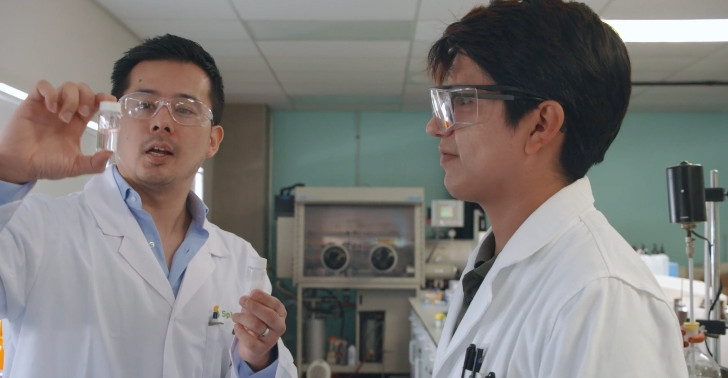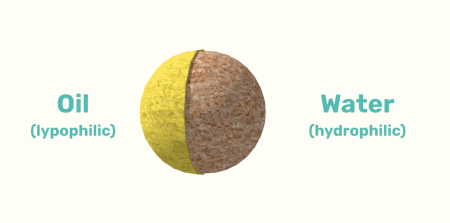
Dr Jack Chen
Spherelose: A more sustainable way to mix oil and water
Surfactants are materials that can sit at the interface between oil and water, allowing these two very different liquids to mix. This simple property has placed them at the centre of a US$45 billion a year global industry, which includes cleaning products, cosmetics, personal care, plastics, food & beverage, and agricultural chemicals.
Surfactants are everywhere, but there are two huge problems. Firstly, they’re unsustainably sourced from petroleum products and secondly, once they enter our waste streams they become pollutants that can’t break down. Even recent innovations that use biodegradable surfactants based on plant oils do not perform as well as their petroleum predecessors and rely on palm and coconut oil, which are devastating our forests.
This is where SfTI Seed researcher, Dr Jack Chen and his team, are solving several problems with one sleek solution they’re calling Spherelose. Spherelose is the product name for a sustainably manufactured cellulose-based biodegradable surfactant, which can be recovered from waste streams due to its considerably larger size.
From scientists to science entrepreneurs
Dr Jack Chen never thought he would be looking to launch a product to market. However now, with the right people around him he’s looking to a future as co-creator of a spin-off start-up with huge potential impact.
“I don't think of myself as an entrepreneur, I would still think of myself primarily as a scientist. We're always curious about how things work and the blue sky problems. But I'm really happy to have this opportunity to take this scientific discovery and actually transform it to something useful.”
Looking for a pathway to commercialisation from the start
Jack has credited SfTI’s approach, which asks researchers to consider potential markets from the start, with the success of the project so far. By connecting with industry at the beginning, Jack and his team pivoted from a pure science perspective investigating gold particles to a potential product which makes use of a cheap and easily-sourced waste material, cellulose.
“The good thing about SfTI funding is that it's about blue sky research but it has a commercial focus. Even before the application, they wanted us to talk to potential end users so that we knew that whatever we developed would actually have an application,” said Jack.
“The good thing about SfTI funding is that it's about blue sky research but it has a commercial focus. Even before the application, they wanted us to talk to potential end users so that we knew that whatever we developed would actually have an application,” said Jack.
Originally Jack was investigating gold particles, however when he approached industry representatives to investigate applications they quickly told him to go back to the drawing board.
“The first thing they told us was; ‘well we wouldn't start with gold, that wouldn't be very useful in industry because it'll be super expensive.’ So they wanted us to go back to the drawing board, but with a sustainable material. Then we started exploring cellulose, which is nature's most abundant, polymer.” said Jack.

Cellulose is a cheap, readily available, sustainably harvested wood pulp and once Jack had pivoted to this material, the concept of Spherelose started coming to life.
Making it across the innovation chasm with super connectors
Following the SfTI Seed funding awarded to Jack in 2019, he now has further funding and a potential product in development. He does not believe this would have happened without the right people around him.
“The legacy of my time working with SfTI would be the connections they have given us. Connections to people that are really excited about commercialisation.”
One of those connections was Enrico Tronchin, SfTI’s Commercialisation Manager. Enrico says having a great idea is just the first step; he is very aware how hard it is for researchers to navigate a pathway to the market. Enrico has played the role of innovation broker for SfTI’s projects including Jack’s. He links researchers up with the right people at the right time to open the right doors to commercial possibilities.
“I love it. That's the creative part of what I do. It's really about fitting horses for courses, in terms of trying to find the best expertise to plug into the project and then figure out how to get the funding, the resources to travel that journey to the next opportunity.”
“Jack’s idea made the mind boggle. Surfactants are used in so many industrial applications. Endless potential. I knew we needed to make sure this project did not fall through the gaps in our innovation system. We had to inject the right expertise at the right time to ensure it found the next step in its path to impact. And so far this seems to be working.”